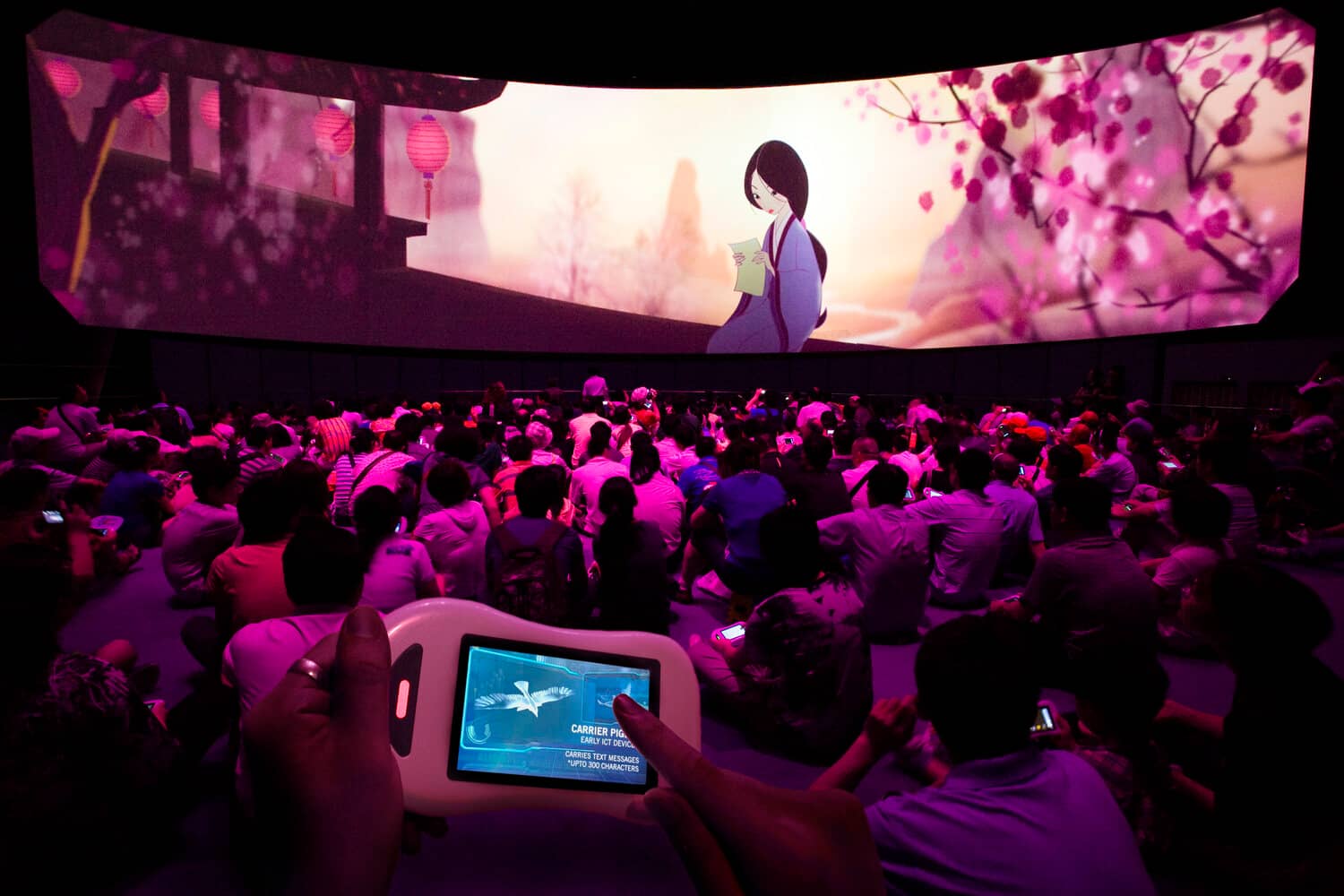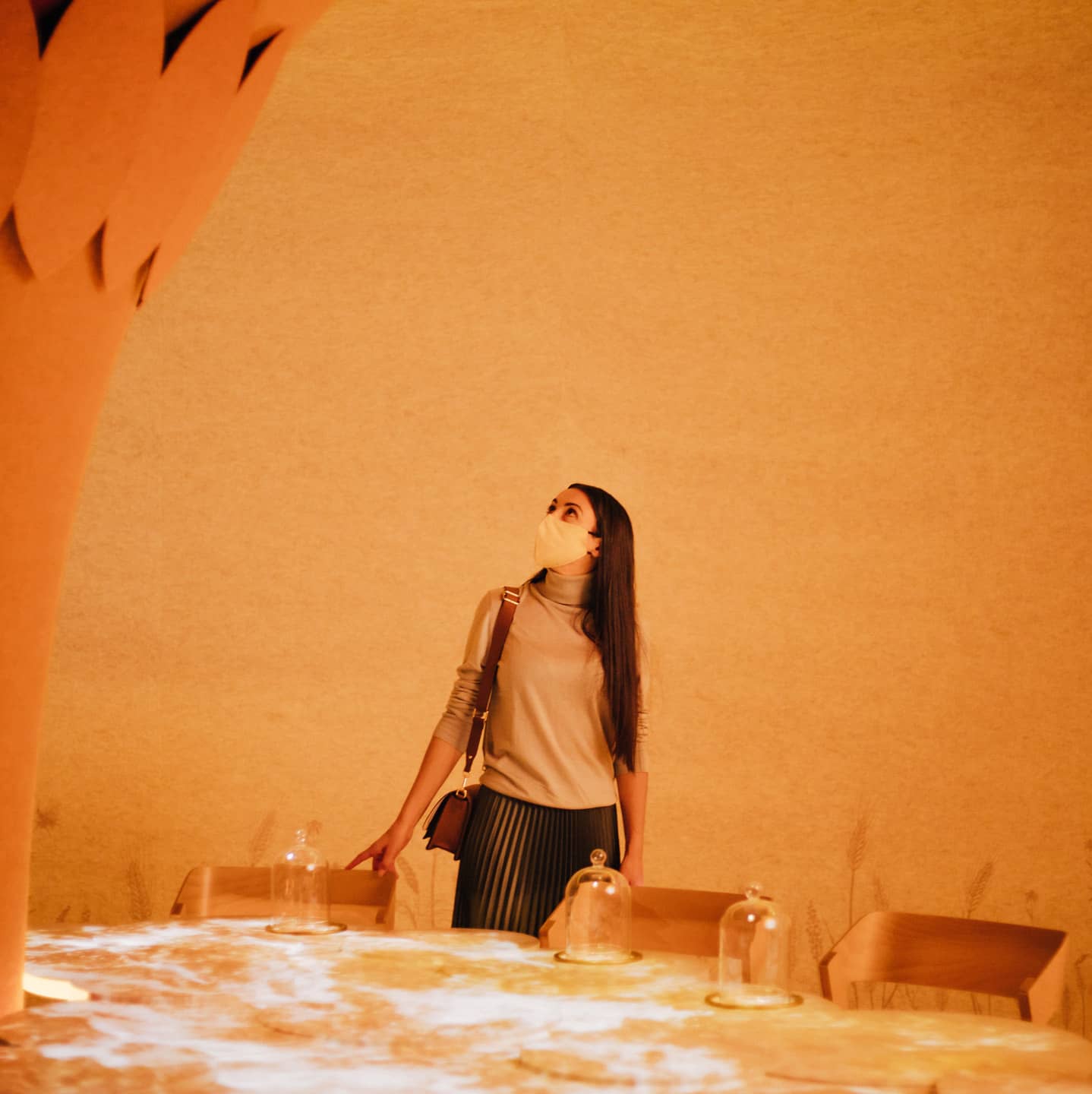- News
- R&D at BRC: The ICT Mobile Device
R&D at BRC: The ICT Mobile Device
April 2021
Written By Edward Hodge
At BRC, our development and innovations aren’t dependent on a physical space. Our R&D process is more of a shared philosophy for how we energize our experiences with innovative and sometimes breakthrough technology and techniques. So when a bunch of us gather around a table to solve a storytelling challenge, anything is possible.
Let’s begin with our philosophy: Necessity is the Mother, Father, and Crazy Aunt of Invention. Many of our industry colleagues have actual Innovation Labs; a dedicated space where they proactively develop technologies that might come in handy for future projects. We’ve discovered that this approach doesn’t work for us, primarily because it often lends to technology for technology’s sake and not story-driven approach to human experience design. The other unintended consequence of developing effects or technology outside of a specific story or experiential need is that you’re tempted to force these tech ideas into a project just to make the investment worth it. For example; if you invented the hammer, then every problem is a nail. That’s just not us.
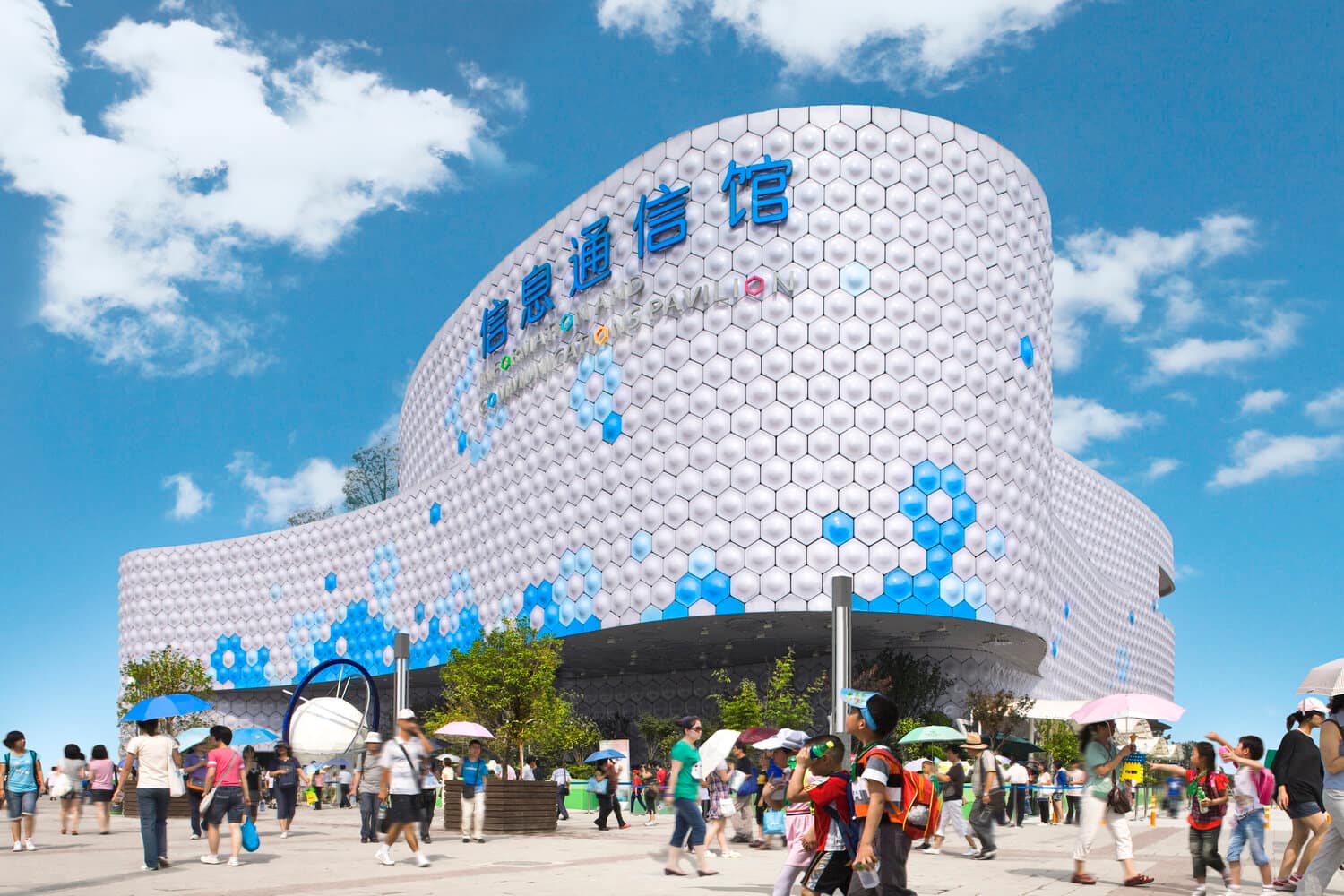
A hand-held device for personalized experiences
A great way to showcase our process is to tell the story of a breakthrough we engineered because we had to solve a client and visitor experience challenge (see “Invention, Necessity” above). In 2008 we were tasked to create an experience for the Information and Communications Pavilion (ICP) at the 2010 Shanghai Expo. China Mobile and China Telecom were the sponsors of the pavilion. These two companies told us that they wanted to put a cutting-edge, ICT mobile device in every guest’s hand that would deepen and enrich the experience (remember, this was 2008, about one year after the first iPhone was sold). The device should astonish guests. It should exemplify the heart of our experience: “Dream Big, Empowered by Boundless Communication in a Connected World.”
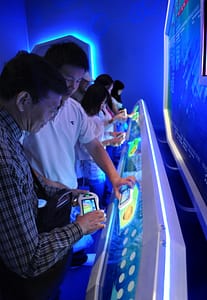
As our team developed the concept, they knew that this device had to:
- Feel personalized for every guest.
- Interact with every area of the Pavilion, from the exterior to the main show. The device would become a kind of magic portal into mysterious cyber-realms of the physical pavilion.
- Serve as a translator for non-Chinese-speaking guests.
- Capable of “catching dreams”: when guests saw something that interested them, they should be able to swipe the device, capture the “dream” and learn more about it later at home.
- Produce a personalized website portal for guests so they could connect online and retrieve “dreams”, photos, digital rewards, and interact with other guests who shared their dreams.
- Do all of the above with a high-volume throughput of 3 million visitors (plus) over six months of operations.
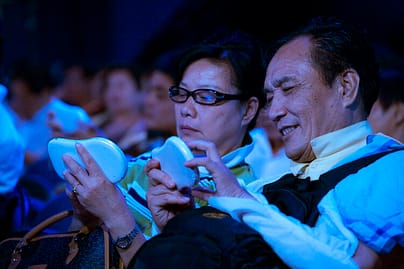
I was brought in just 9 months before opening to technically produce the show. BRC was moving from the design phase into production, creating not only the pavilion but also its huge, immersive signature show.
Part of my role was to deliver the device. I’d seen beautiful renderings of the device from the concept package, and silly me, I just assumed that we were going to purchase and program an existing device. Instead, I had one of those stomach-drop moments when I was told, “No, there’s no device. You’re in charge of inventing it. Oh, and we might need 15,000 of them. As soon as possible.” Umm, right. Okay.
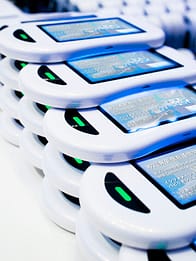
A day later, I was on a very nice airplane for a two-week trip to our manufacturing partners in China, discussing what technologies we needed, who could make it and how enough could be built in a very limited amount of time. What followed was an example of BRC’s R&D process at its finest.
Every obstacle is an opportunity
We had a staggering set of challenges that we needed to solve in a very short period of time. For example, we needed 15,000 LCD screens immediately. We soon discovered that LCD screens are a traded commodity and required sending people with cash (!) to trading centers to get whatever we could.

We also needed to distribute about 500 devices every 15 minutes (we were hosting 25,000 guests a day), which meant that guests only had about 5-6 minutes to register and enter their dream preferences. To make this a frictionless experience, we engaged focus groups very early in the process. We knew that most guests had never held a device like this before, so we went out of our way to make sure the interface was intuitive and that the device felt comfortable and inspired everyone to engage.
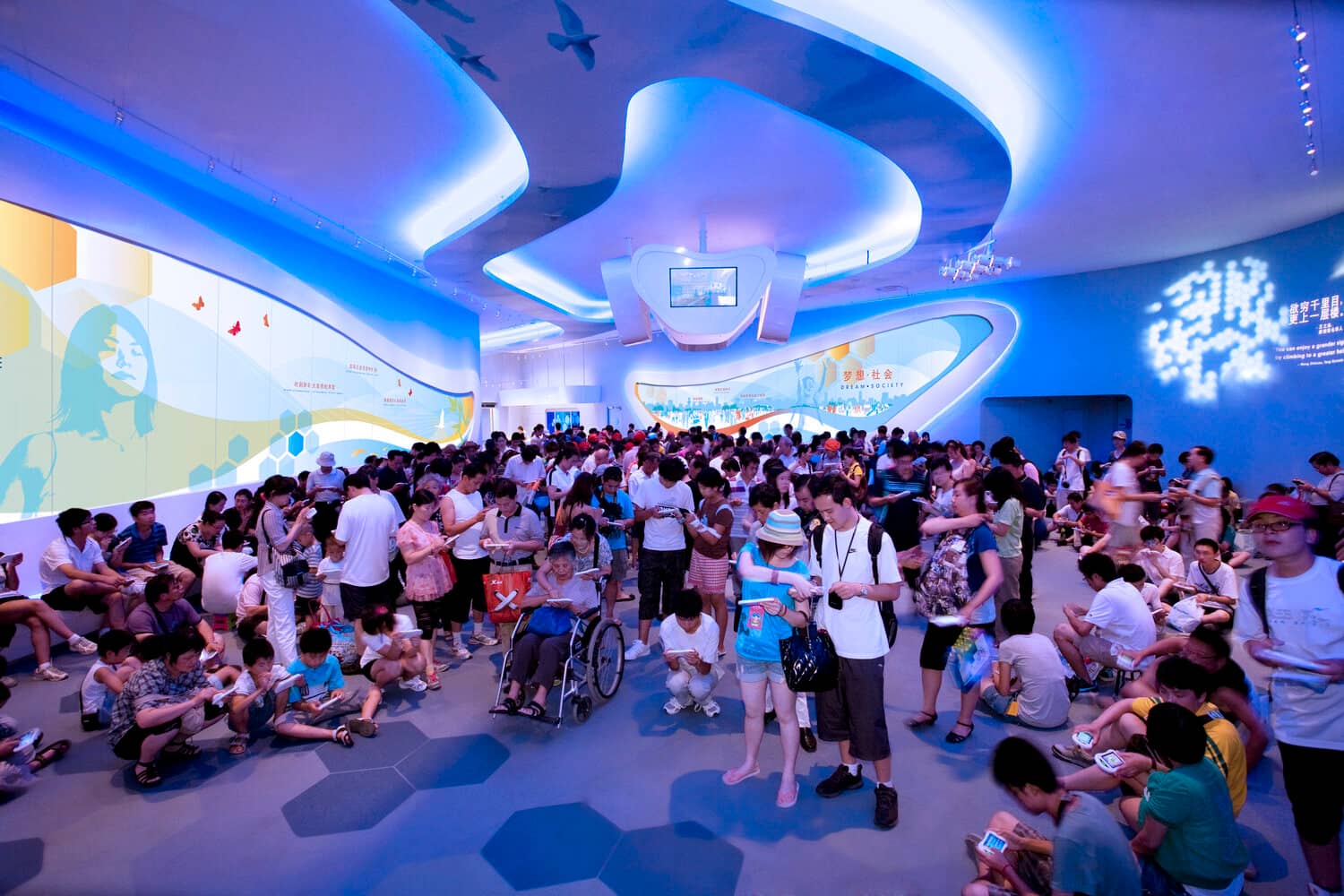
With 15,000 devices in circulation, our process for cleaning, charging, updating, and debugging the devices needed to be scaled. So we created one of the most robust Wi-Fi networks in Shanghai and harnessed the power of people with lots (and lots) of free pizza.
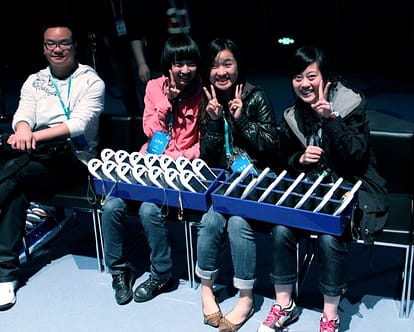
After our focus groups, we quickly realized that we had to incentivize guests to return the device at the end of the show. After they’d become emotionally attached to the device, many guests assumed the device was a gift and simply put it in their bags to take home! We strategically positioned hosts to funnel exiting guests across to security checks. Hosts vocally thanked guests and asked for the device back. In the event this wasn’t enough, we also created a three-stage security system that would disable and begin to alarm the device so that it could be recovered in the retail area.
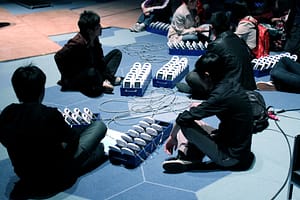
Storytelling and next generation hybrid experiences
As for the achievement, I’ll quote the 2011 THEA Awards Committee:
The ICT Mobile Device is an exemplary achievement in the integration of technology with storytelling that enables an outstanding visitor experience. As one of the top attractions at the Expo Shanghai 2010, the Information and Communication Pavilion was unique in its use, not only of well-known industry technical systems but an entirely new and novel handheld device that interactively connected every guest with the presentations within the Pavilion.
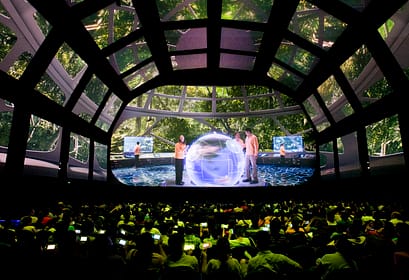
The ICT was an early example of hybrid experiences. The combination of an online virtual experience prior to arrival; an in-pavilion experience that was personalized to every visitor and worked seamlessly with the physical exhibitions and immersive shows; and a post visitor experience that extended the journey, allowing visitors a chance to learn more about their dreams.
Today we’re pioneering the next generation of hybrid experiences and we’re doing this using AI, virtual software and a host of new technologies. But it always comes back to storytelling and creating a meaningful human experience for our clients and their guests.
